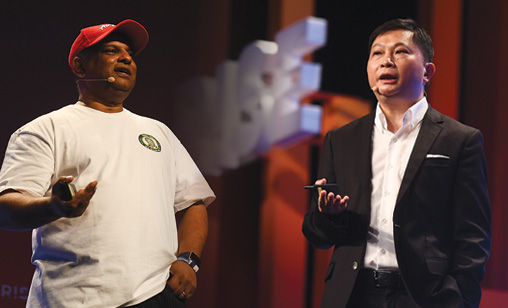News Backgrounder
Airlines “go beyond” to identify IT talent
July 1st 2019
Airline technology is going back to the future. Read More » It was once a global innovator with solutions that resolved known problems and enabled unforeseen growth. Facilitating that development were platforms made in-house, externally or in collaboration. Airlines are returning to that entrepreneurial approach as they seek to end an industry cycle of under-investment and lagging innovation.
It is now common to hear about airlines sponsoring hackathons and start-up incubators. They are on the prowl, willing to buy new companies if the opportunity is right, as two airline leaders told the RISE start-up conference in Hong Kong this month. Acquisitions require cultural alignment, even at the AirAsia group headquarters where the office has a slide, bean bags and jeans are commonly worn.
 |
“We bought some start-ups and we allowed them to continue being start-ups,” AirAsia Group boss, Tony Fernandes, said at the RISE conference. “We let them be as they are. It’s tough sometimes as a fellow entrepreneur because they’re very free-spirited. I do get my two pennies’ worth in.”
Companies that airlines acquire or invest in need perseverance when confronting bureaucracy. They also may have a different understanding of the issues airlines face and where the pain points are, said Cathay Pacific Airways chief customer and commercial officer, Paul Loo. “In order to work with the corporations, I would suggest that in addition to product, you need to understand the frustrations or the legacy of corporations,” he said.
Innovations from past decades were started or eventually taken up by multiple airlines. This could continue in the current innovation cycle. Cathay is open to other airlines using technology it finds. “We don’t believe in keeping everything to ourselves. If it’s good for the industry, we don’t mind to share,” Loo said. Widespread use of technology like disruption management would strengthen hubs, which is relevant for Cathay Pacific’s typhoon-prone Hong Kong.
Airline initiatives and collaborative approaches are necessary to those who reckon a handful of technology heavyweights, especially Google, could control the travel industry and dictate terms. That is making venture capitalists and private equity weary of investing in companies that Google may try to supersede with its own product, the Australian Financial Review wrote earlier this month.
Google may be more interested in the consumer-facing side, like travel search and distribution. Loo said Cathay had good relations with Google and also Alibaba and Amazon Web Services. “They bring in new ideas and together we can focus on use cases,” he said. “They can use us as a test case.”
AirAsia has found some partners at start-up conferences. Options include outright purchases as well as acquisition of management teams that then receive company equity. “We want to continue to acquire or joint venture. I believe that’s a much better way than trying to build everything yourselves,” Fernandes said.
He has clear digital aspirations which he often reveals directly on Twitter. Fernandes likes to pitch the AirAsia group as a technology company with planes. Its website is its own company, which Fernandes said could have an IPO.
Airlines today are bigger in production capability, but often smaller in focus as subsidiaries have been spun off or divested. Investors look for airlines with discipline and a focus on their core flying business. An activist shareholder wants Korean Air to distance itself from related companies. At the extreme end, HNA’s diversification is being unwound.
Airlines can be under external shareholder pressure to justify a wider portfolio with IT investments that break the established capital expenditure mould of buying aircraft. The irony is that even a major IT acquisition could be less than the cost of a narrow body aircraft and generate higher returns.
Resistance can occur internally. Even board directors may question investment in unfamiliar but innovative areas. In his role at Cathay Loo can push for innovation speaking from his experience in IT. “We were having a hard time even making a small change to the extent that the IT department became the laughing stock of the company,” he said.
Loo restructured IT to make it accountable and focused on solving specific challenges. Potential acquisitions have to be good but also solve problems that have a wide impact or alleviate an exasperating problem. Loo said: “It’s about supporting use cases. I have great support from my boss and my board to do all the right things for my customers and for our front line.”